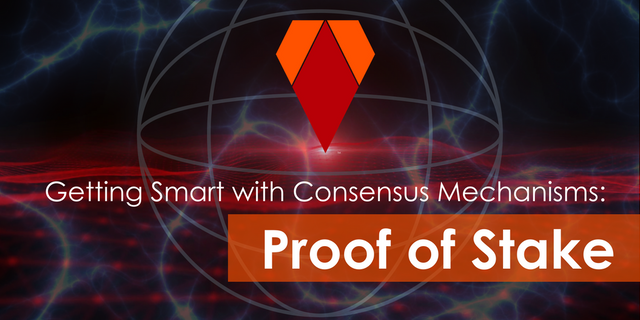Getting Smart With Consensus Mechanisms: Proof of Stake Mining

Proof of Stake, was designed as an alternative to PoW.
As you learned from our previous blog, proof of work has no lack of downsides. First introduced to the world by Peercoin in 2012, Proof of Stake was meant to be the answer to the list of faults presented by PoW. Like other consensus mechanisms, you’ll often see it abbreviated as PoS. There are many blockchains that use the PoS protocol, but it’s not to be mistaken for Delegated Proof of Stake, which we will cover in the next part of our series. We’ll go over how PoS exactly works and compare the pros and cons of a Proof of Stake system.
How exactly does Proof of Stake work?
As you now know, in PoW mining, the new block creators are chosen by who can solve the answer to a puzzle fastest. In Proof of Stake, the block producers are chosen based on their “stake.” Miners, or in PoS terms, “forgers,” instead of purchasing large, costly equipment, invest their funds in the cryptocurrency itself.
Now if everyone’s staking, how is the next block producer chosen? That’s dependent on a few factors, one being the amount that each forger is staking. For instance, if Jim is staking 100 tokens, and Bob is staking 1,000 tokens, Bob would be the forger chosen over Jim. Another factor that’s considered in the choosing of producers, is the length of time that one has been staking. So, if Bob has been staking 1,000 tokens for 6 months, and Doug has been staking the same amount, but for a year, Doug would be the chosen over Bob.
This method was intended to, and does, save enormous costs in terms of energy consumption over PoW. It arguably allows for a decentralized network, after all, anyone can buy some tokens and stake them. And, mining power is assigned according to one’s stake, rather than their computational power. If someone owns 5% of the tokens, they can only mine 5% of the blocks.
Are there other advantages to Proof of Stake?
• It would be very costly to execute an attack. An attacker would have to hold 51% or more of the currency to even attempt an attack. Obviously, prices would rise if someone was trying to purchase that much of a single currency, making the costs virtually incalculable.
• Because an attacker would have to hold over 50% of a currency to attack the network, it wouldn’t make much sense to do that. It would theoretically cost them even more, on top of what they already spent to accumulate that much, because the market price would drop in the first word of this type of hack.
• It’s much quicker. PoS provides much faster processing times in comparison to PoW.
So, what are the disadvantages?
• There’s no block rewards. Forgers instead receive transaction fees for their contributions.
• Because the only real barrier for entry, is how much one is willing to stake, the network is controlled only by those who have the most money. It’s argued that this system goes against the very nature of blockchain itself.
• Since the top stakeholders receive more blocks, their stake then increases. This compounds the problem of those holding the most stake, having the majority of control.
• In lesser established networks, or in the case of founders holding a large portion of stake, the chances of an attack can actually be higher.
• The level of decentralization is controlled by those who have the most money.
Is Proof of Stake the answer to all Consensus Problems?
Proof of Stake gives us a great alternative, and addresses some of the major issues of other widely used consensus protocols. With that, it presents us with its own set of problems. Creating equal access for all, and a system which everyone gets a say, is the backbone of a true democracy. The “pay to play” aspect of Proof of Stake, turns many crypto lovers off. It’s widely recognized, that traditional PoS protocol actually incentivizes centralization.
One of the core objectives of Bitcoin, was to create a decentralized, peer to peer transaction system. While Proof of Stake systems allow for peer to peer transactions, the level of decentralization is once again threatened, by who has the deepest pockets. We’ve seen this issue brought up in the case of PoW, with the high cost of equipment creating a solid barrier for many.
This leads us to our thought, that there must be something out there that solves this problem as well. And there is. In our next, and final blog in this series, we’ll introduce you to perhaps the most practical, scalable, and decentralized Consensus Mechanism that exists.
Be sure to follow us to catch the last in our series on consensus mechanisms - And connect with us on Social Media!
Twitter
Facebook
Instagram
Tumblr
Medium
Reddit
Telegram
Global Communities

Good explanation of the PoS... Well done... upvoted and resteemed :)
Thanx for your great posts @viceindustry !! 😎 👌 👍 Greetings from Germany Lars
#upvoted #resteemed and promoted on Instagram too
But what exactly produces the block in PoS. Like what conforms the transactions if block hash is not found? 2nd is there an equivalent of pool mining in case of PoS?